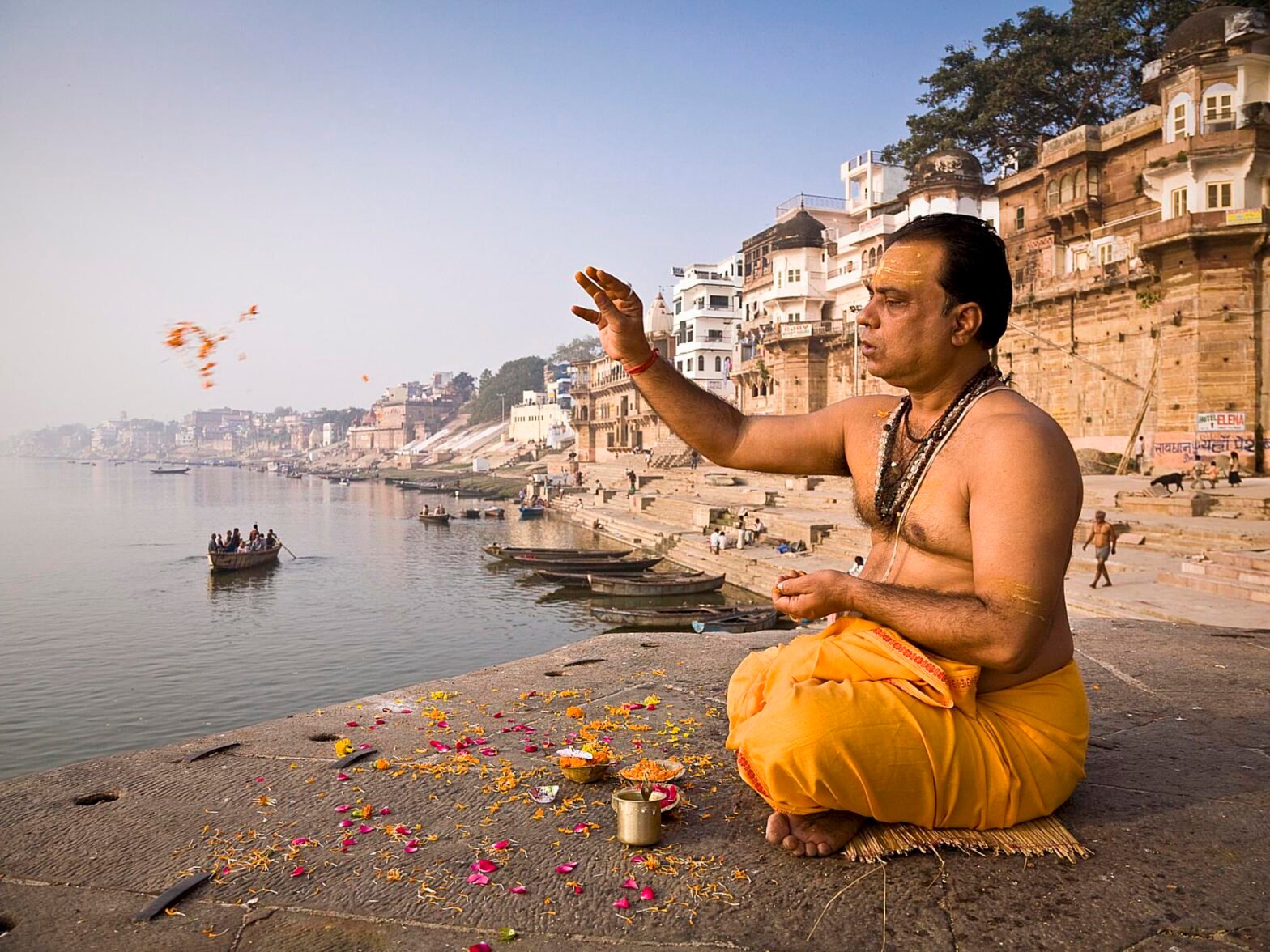A TRUE Brahmin is one who has acquired brahminhood not by birth but through his noble actions. He who has gained Supreme Self-knowledge is a Brahmin. Vedas and Epics proclaim that there is no caste differentiation in the Brahminic State.
Initially, people took up occupations in tune with their aptitudes and temperaments.
People dedicated to such vocations were technically classified as Brahmanas, Kshatriyas, Vaisyas and Sudras, possessing equal status in society.
Brahmins are those who have an inclination towards acquiring and disseminating sacred knowledge; Kshatriyas are those who have an in-built capacity to provide social security and peace; Vaisyas have a born tendency for trade and agriculture; and finally Sudras are persons willing to render services as in carpentry, blacksmithy, moulding, goldsmithy, ploughing and the like requiring manual labour. These were merely trade-based nomenclatures.
In the beginnning, men were either Brahmins or Sudras, according to Brihadaranyakopanishad.
In Apasthampa Sutras all are Sudras by birth. Manusmrithi declares: ‘‘Knowldege uplifts a man to brahminhood; skill in arms makes a Kshatriya; enhancement of wealth moulds a Vaisya, whereas Sudra’s qualities are congenital traits.’’ From this it is clear that the first three states of the caste system are developed after birth as a Sudra.
The aptitudes of castes: The contention in the Shanti Parva of Mahabharata is that no caste is superior to any other. It further states that God’s creations are equal and the classification of castes is based on individual tastes.
Sri Krishna, who is adored by all Hindus including Brahmins, was born in Yadava caste, a backward class of the present age. Let’s take the case of Shiva, who was a hunter belonging to the Scheduled tribe. He is worshipped by all Hindus, Brahmins included. Does this mode of worship not reveal a truth that Brahmins, Sudras, Kshatriyas and Vaisyas were all equals in the bygone era? The Vedas spoken of as the soul and supreme soul of the so-called Brahmins were classified by Veda Vyasa, the son of a fisher-woman.
Valmiki was a chandala (social outcast) prior to his attainment of sagely state. He was the author of Ramayana, a sacred text of all Hindus, including Brahmins. Sage Aitareya, the author of Aitareyopanishad, was the son of a Sudra woman. He was designated as a Brahmana. The legend of Viswamitra, a Kshatriya-turned Brahmin through his severe penance and austerities, is well known to all. Sage Vidura was born to a palace menial. He became a Brahmin on the authority of his fathomless learning.
Mythologies cite several instances of one offspring of the selfsame mother crowned as a king and another anointed as a priestly Brahmana, for example, Santanu, the king and his brother Devapi, the scholar. Kshatryia Khadru adopting Brahminhood is narrated in Bhagavata Purana. Satyakama of the depressed caste was made a Brahmin when Sage Gothama accepted him as a disciple. The very first question Sage Gothama put to Satyakama when the latter approached the former seeking discipleship was: ‘‘My boy, which family do you hail from?’’ Satyakama replied: ‘‘Oh, my preceptor! When I asked my mother about my ancestry, she denied any knowledge of it. She earned a livelihood in her youth by doing menial works at various households.
She does not know who her father was.
She is a Jabala and I am her son Satyakama. She advised me to declare my name as Satyakama Jabala, which will suffice.’’ The response from Sage Gotama to the reply from the boy was this: ‘‘Only a true Brahmana can speak like this. Go and collect firewood from the woods. I have accepted you as my disciple. You have not transgressed a little from truth.’’ According to Yudhistira, as asserted in Shanti Parva of Mahabharata, a Brahmin is one who is truthful, patient and compassionate.
The Sudra who can hold steadfast in spiritual practices such as integrity, forbearance, justice and the like can reach brahminhood, says Mahabharata. What all these things emphasize is that there is an immeasurable gap between a true Brahmana and the present-day selfstyled caste of Brahmins.
Who are these people specified as Brahmins? It is believed that a majority of them are not Brahmins in its original sense! That the Brahmins in order to suit their vested interests had inserted their theories and opinions in the vedas and epics was recorded by Dr D D Huston in his book ‘Wonderful Ethiopians of the Ancient Kushits Empire’.
He points out that certain theories that Brahmins added in the Vedas were copied from Buddhism.
The Brahmins who had borrowed some of Buddha’s thoughts had strived to establish Buddha as an incarnation of Mahavishnu, Huston says.

